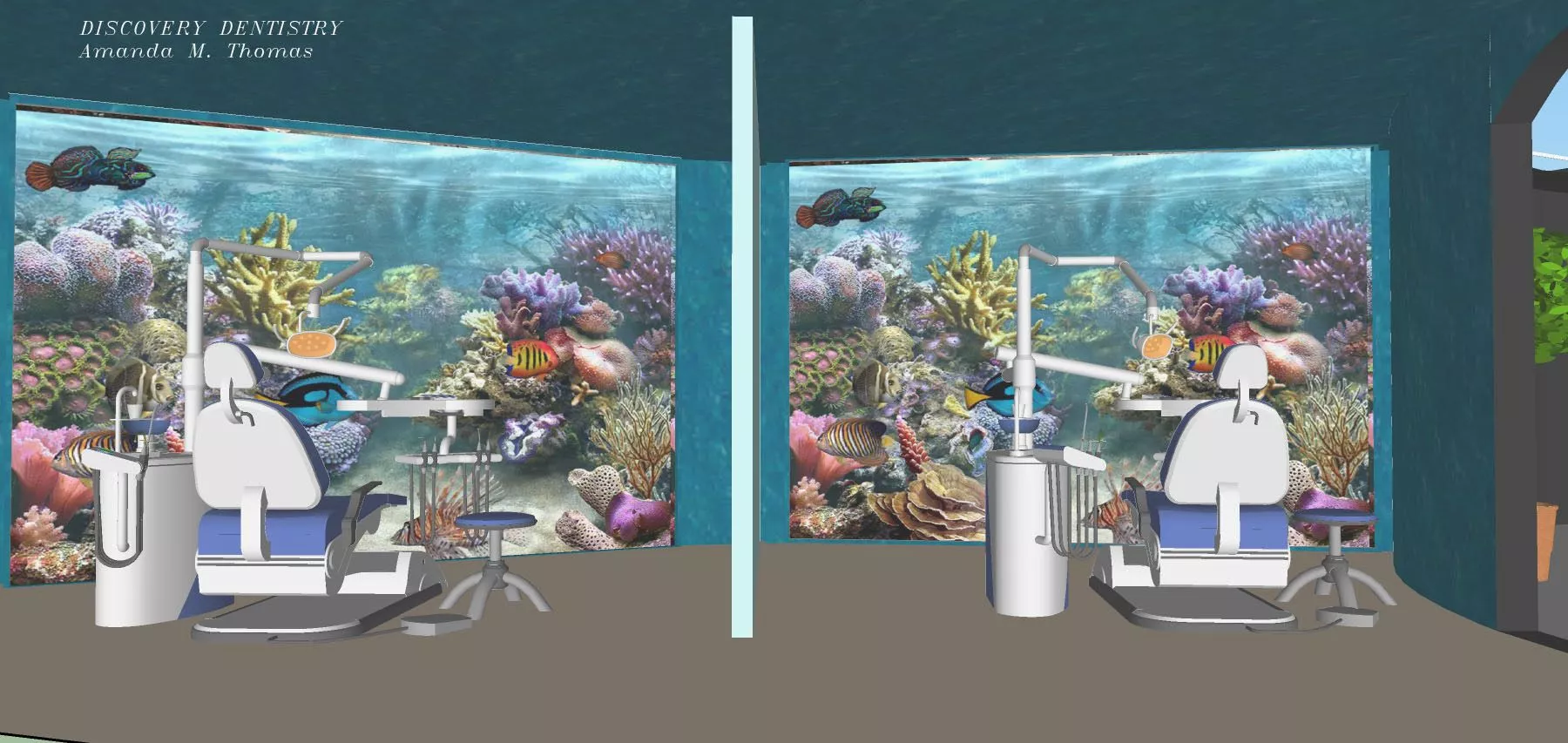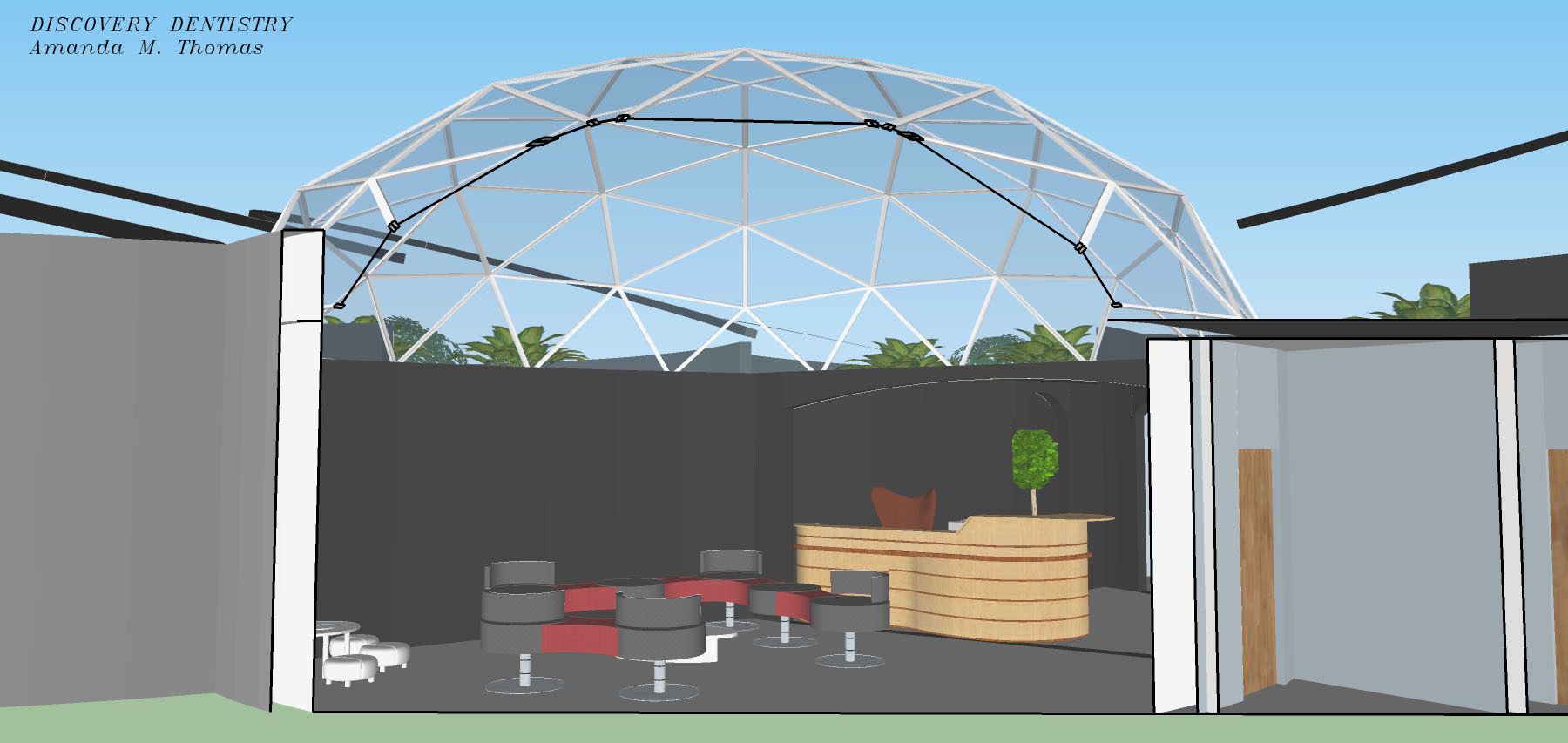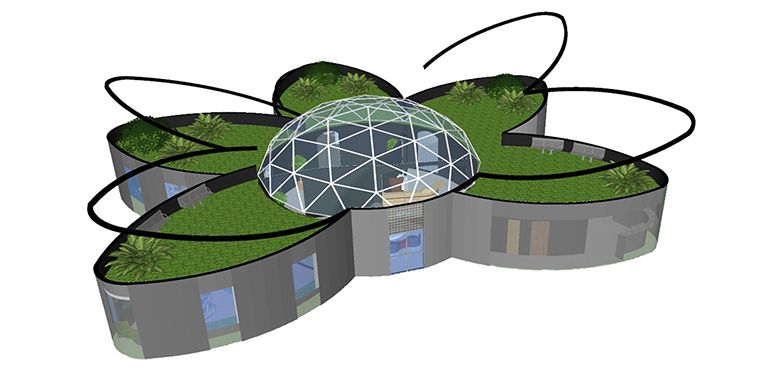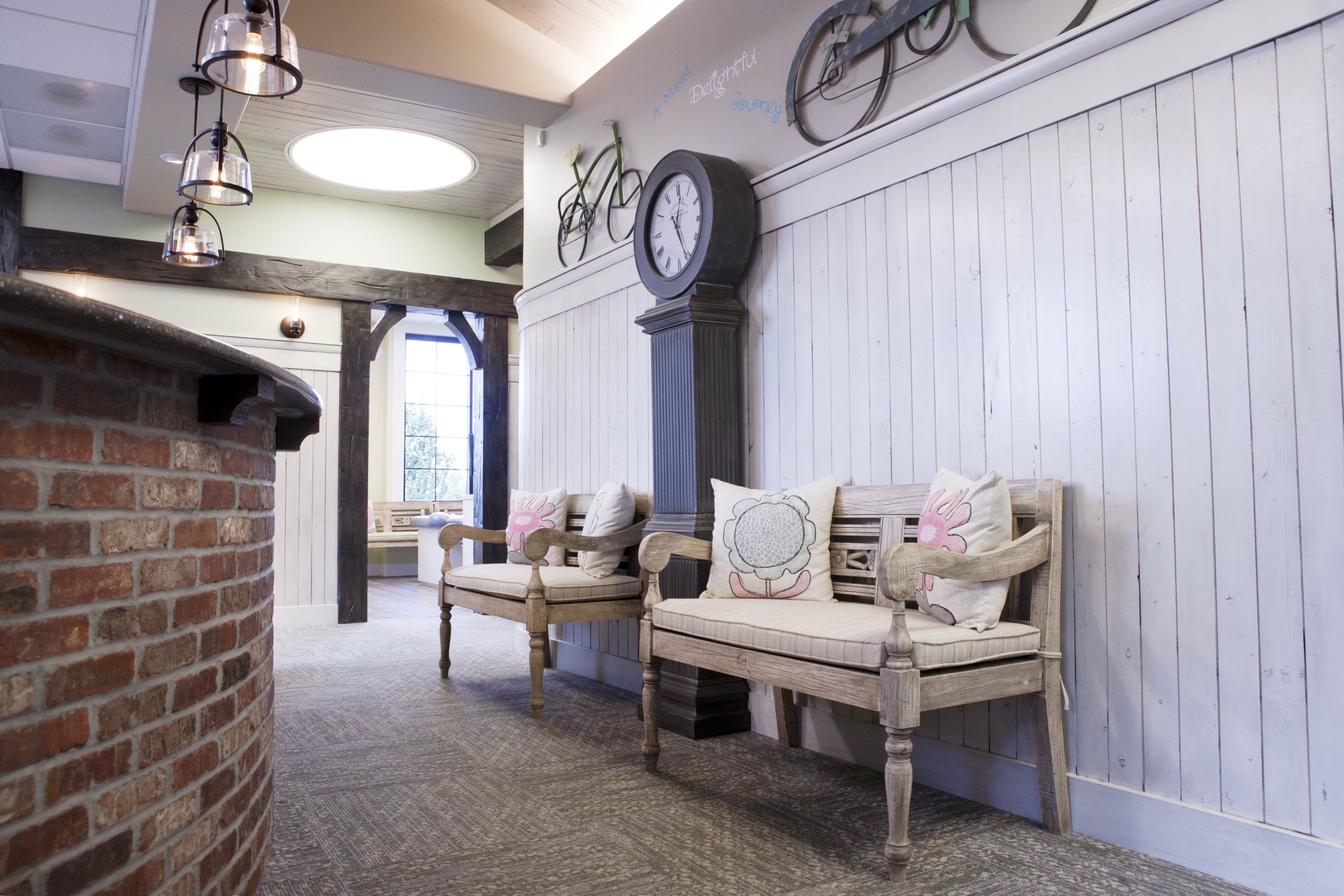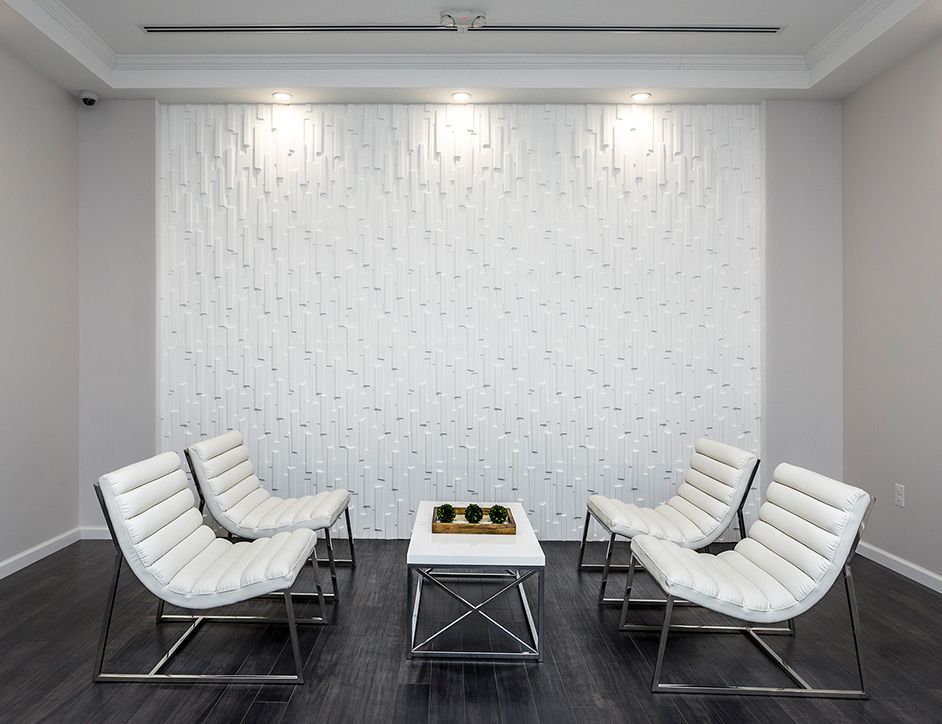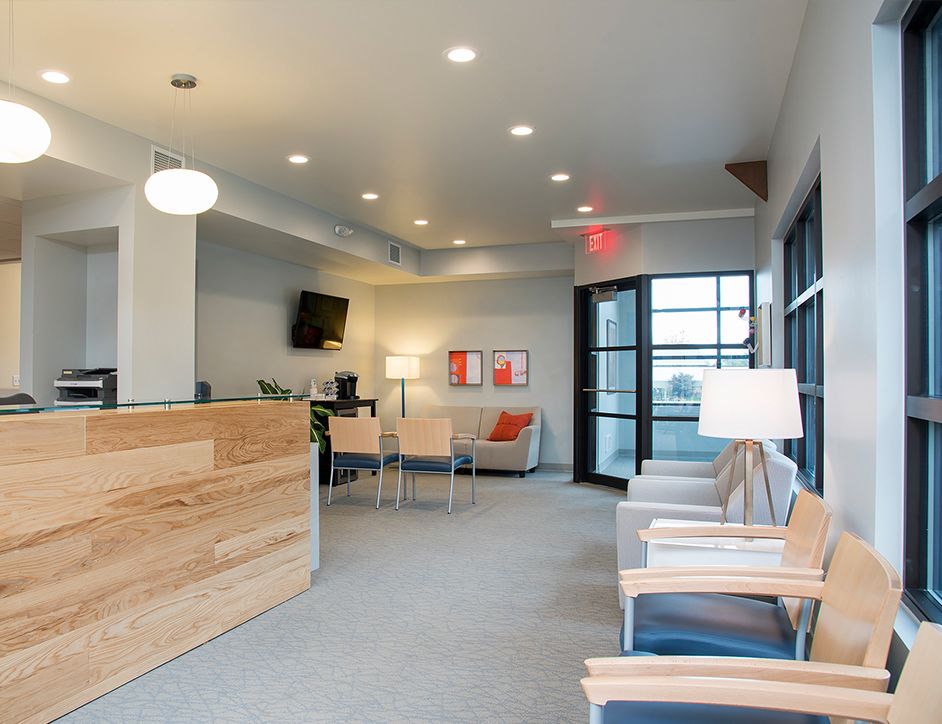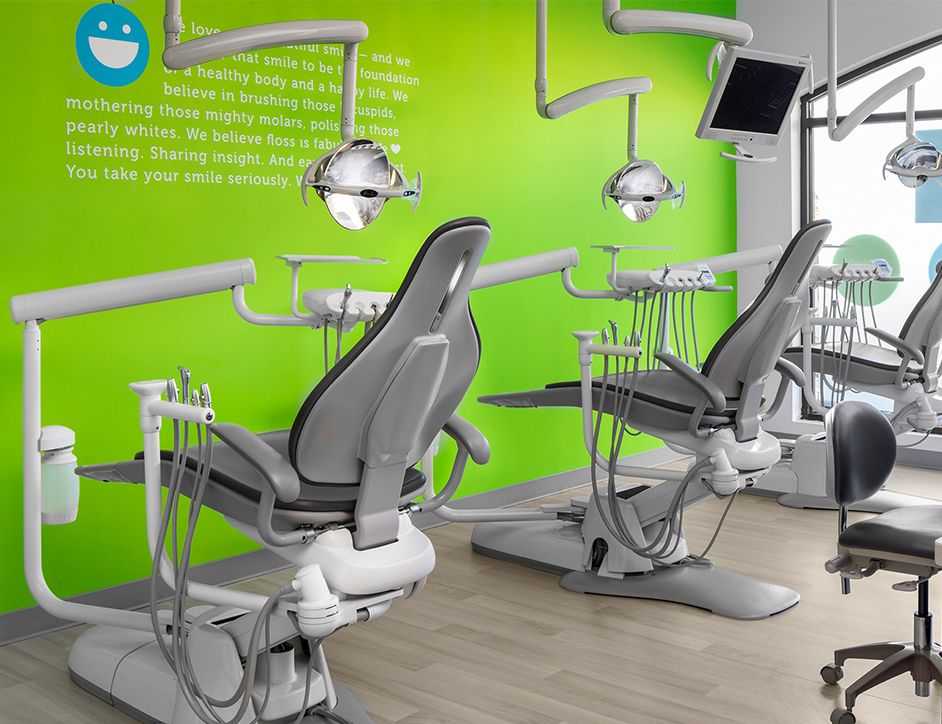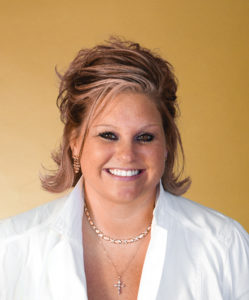 THE PRIMARY IMPETUS behind Amanda Thomas’s whimsical design for Discovery Dentistry, her practice of the future, was the undeniable need in the years ahead for better facilities for pediatric patients. “I consider myself a child at heart,” says Thomas, a designer at Q uad3, an architectural/engineering firm with services including civil, mechanical, plumbing, electrical and environmental in Wilkes-Barre, Pennsylvania. (The company, which serves mostly commercial clientele, also has offices in Pittsburgh and Moosic, Pennsylvania.) “I was able to create a design that was whimsical and fun, something I would have enjoyed as a child.”
THE PRIMARY IMPETUS behind Amanda Thomas’s whimsical design for Discovery Dentistry, her practice of the future, was the undeniable need in the years ahead for better facilities for pediatric patients. “I consider myself a child at heart,” says Thomas, a designer at Q uad3, an architectural/engineering firm with services including civil, mechanical, plumbing, electrical and environmental in Wilkes-Barre, Pennsylvania. (The company, which serves mostly commercial clientele, also has offices in Pittsburgh and Moosic, Pennsylvania.) “I was able to create a design that was whimsical and fun, something I would have enjoyed as a child.”
And how: The floral shape of the practice, evident in the floor-plan schematic at right, is both clever and functional. Each petal represents a different kind of dental room: a Mommy and Me / Daddy and Me room in which parent and child can get treatment at the same time; an Outer Space room; an Ocean Room; and a Fairy Tale Room. “Each of these rooms has ‘virtual walls’ that allow the patient to escape the reality of their dental visit into an imaginary world, thus helping them to relax during their visit,” Thomas says.
The fifth petal is reserved for restrooms, doctors’ private offices, storage and a break room. The central core, meanwhile, hosts the reception area and facilitates flow throughout the entire space.
The building’s shape isn’t the only ecologically minded touch; in her design, Thomas included a green roof to absorb rainwater, provide insulation and integrate natural space into the practice. Such roofs aren’t yet common, of course, but they’re not nearly as futuristic as they used to be. “Although garden roof systems are somewhat more expensive, the soil blocks UV rays from contacting the membrane, which generally increases the roof’s life expectancy,” Thomas says. “As far as practicality, it all depends on the geographic area and project budget.”
In any case, practicality is just one consideration when it comes to imaginative speculation. A sense of fun is just as important, as Thomas notes. “I tried to think about places that children love, about places I loved as a child, and how I could incorporate them into a futuristic design,” she says. Pediatric patients in decades to come will surely thank her.


